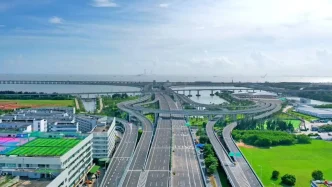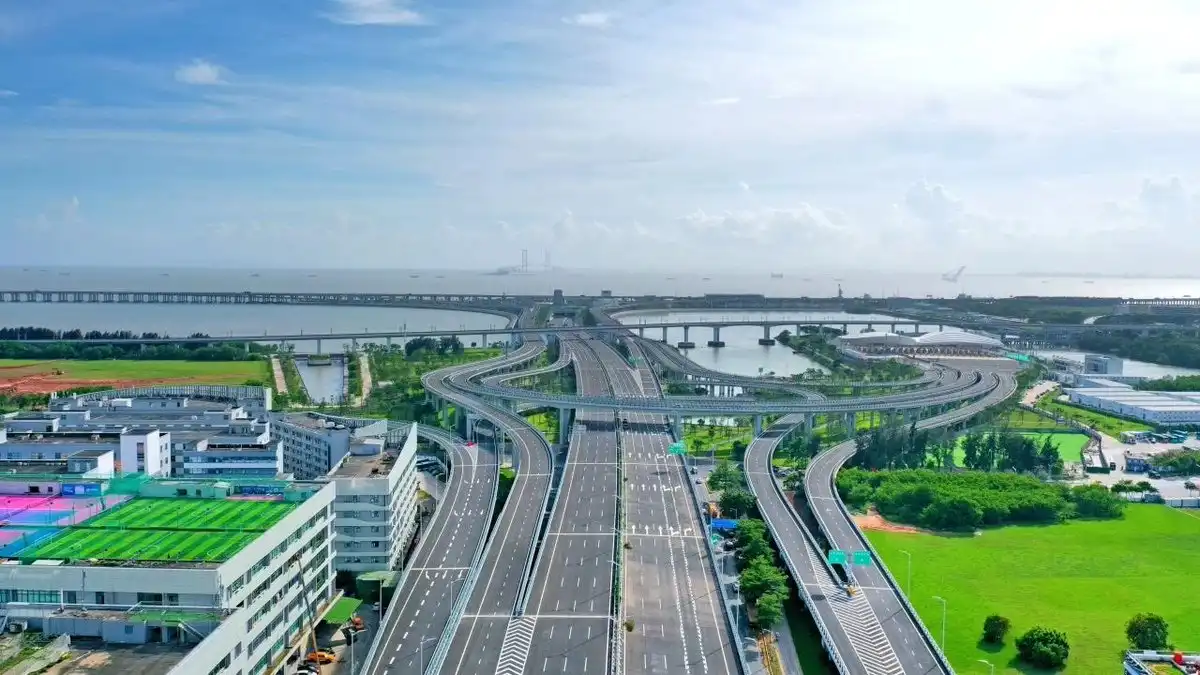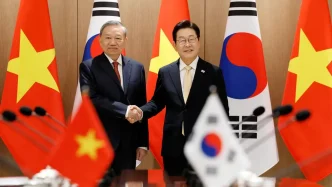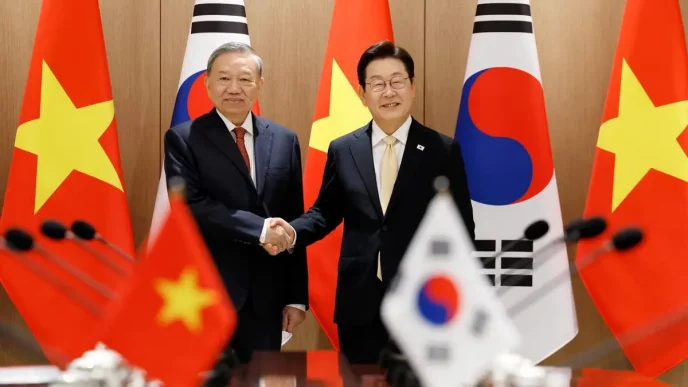A significant step forward in regional connectivity and trade efficiency has been marked by the recent opening of the Chongqing-Hai Duong route under the Western China New International Land-Sea Trade Corridor. This cross-border highway service, linking Chongqing in Southwest China to Hai Duong in Northern Vietnam, promises to enhance logistics and economic ties between the two nations, streamlining customs processes and fostering greater integration within the Greater Mekong Subregion (GMS).
A Milestone in Cross-Border Logistics
On August 4, 2025, a regular lorry service completed its inaugural journey from Chongqing to Hai Duong, covering approximately 1,500 kilometers. Departing from the Chongqing Nanpeng Highway Bonded Logistics Center, the lorry navigated through the Hekou Port on the China-Vietnam border in Yunnan province before arriving in Hai Duong province. This route operates under the Cross-Border Transport Facilitation Agreement, a key component of the GMS cooperation program aimed at reducing trade barriers and improving connectivity across Southeast Asia and China.
The launch of this route is more than a logistical achievement; it represents a strategic expansion for Chongqing, which serves as the operational hub for the International Land-Sea Trade Corridor (ILSTC). According to the Chongqing Highway Logistics Base, the new service is expected to improve customs clearance efficiency by approximately 30 percent, a critical factor in reducing costs and delays for businesses engaged in cross-border trade. This efficiency gain is poised to benefit a wide range of industries, from machinery to electronics, that rely on seamless transport between China and Vietnam.
Strengthening Economic Ties in the Greater Mekong Subregion
The Western China New International Land-Sea Trade Corridor, initiated in 2016, has grown into a vital network connecting China with ASEAN nations, as well as regions in Central and South Asia. Spanning 12 countries and 15 provincial-level regions within China, the corridor facilitates the trade of 14 categories and 580 types of products, including automotive parts, motorcycle components, and high-tech electronics. The scale of this operation is underscored by the numbers: over 31,000 vehicle trips have been completed to date, with a total cargo value surpassing 24.5 billion yuan (~US$3.41 billion). In the first seven months of 2025 alone, 8,921 vehicle trips transported goods worth approximately 10.3 billion yuan (~US$1.43 billion).
The Chongqing-Hai Duong route adds a new dimension to this expansive network, specifically targeting the Vietnam market, which is a key player in the ASEAN economic bloc. Vietnam’s strategic location and growing industrial base make it an essential partner for China, particularly as both nations seek to deepen economic integration through initiatives like the GMS and the Belt and Road Initiative (BRI). The route not only shortens delivery times but also reduces logistical bottlenecks at border crossings, addressing long-standing challenges faced by exporters and importers in the region.
Broader Implications for Regional Trade
The opening of this route comes at a time when global supply chains are under intense scrutiny, with disruptions caused by geopolitical tensions and post-pandemic recovery efforts. For China and Vietnam, enhancing cross-border logistics offers a way to mitigate some of these challenges by creating more resilient and localized supply chains. Vietnam, with its proximity to China and its role as a manufacturing hub for electronics and textiles, stands to gain significantly from faster and more efficient transport links. Similarly, Chongqing, as a major industrial and logistics center in Southwest China, strengthens its position as a gateway to Southeast Asia.
Beyond bilateral benefits, the route’s integration into the GMS framework highlights the broader regional implications. The GMS, comprising Cambodia, Laos, Myanmar, Thailand, Vietnam, and China’s Yunnan province and Guangxi Zhuang Autonomous Region, focuses on fostering economic cooperation through improved infrastructure and trade facilitation. The Chongqing-Hai Duong route aligns with these goals, contributing to a more interconnected subregion where goods, services, and capital can flow with greater ease. This development could serve as a model for similar initiatives elsewhere in the corridor, potentially extending to other ASEAN nations in the future.
Challenges and Opportunities Ahead
While the launch of the route is a positive step, it is not without challenges. Cross-border logistics often face hurdles such as differing regulatory standards, language barriers, and infrastructure disparities. Although the Cross-Border Transport Facilitation Agreement addresses some of these issues, sustained cooperation between China and Vietnam will be necessary to ensure the route’s long-term success. Investments in border infrastructure, digital customs systems, and harmonized trade policies could further enhance efficiency and reduce operational costs for businesses.
Moreover, the environmental impact of increased lorry traffic must be considered. As the corridor expands, so too does the carbon footprint associated with road transport. Both nations have committed to sustainability goals—China with its carbon neutrality target by 2060 and Vietnam with its National Green Growth Strategy. Balancing economic growth with environmental responsibility will be critical, potentially through the adoption of cleaner fuel technologies or incentives for low-emission vehicles on the route.
On the opportunity side, the Chongqing-Hai Duong route opens doors for small and medium-sized enterprises (SMEs) in both countries. By reducing logistics costs and transit times, SMEs—often constrained by tight budgets—can access new markets and compete more effectively. For Vietnam, this could mean greater exports of agricultural products and consumer goods to China, while Chinese firms gain improved access to Vietnam’s burgeoning consumer market. The ripple effects could extend to job creation, industrial growth, and stronger economic interdependence.
Geopolitical Context and Strategic Importance
The timing of this route’s opening also carries geopolitical weight. As China seeks to bolster its influence in Southeast Asia through infrastructure and trade initiatives, Vietnam remains a pivotal partner. Despite historical tensions, economic cooperation has flourished, with bilateral trade reaching record highs in recent years. The Chongqing-Hai Duong route reinforces this trend, signaling a mutual commitment to practical collaboration over territorial or ideological disputes.
Additionally, the route underscores China’s broader ambition to diversify its trade pathways beyond maritime routes, particularly in light of vulnerabilities exposed by South China Sea tensions. Land-based corridors like this one offer an alternative, reducing reliance on sea lanes while strengthening overland connectivity with ASEAN. For Vietnam, participation in such initiatives enhances its role as a regional trade hub, potentially attracting further foreign investment and infrastructure projects.
Looking Forward: A Catalyst for Growth
As the Chongqing-Hai Duong route begins regular operations, its impact on China-Vietnam trade will be closely watched by policymakers, businesses, and regional observers. If successful, it could pave the way for additional routes within the Western China New International Land-Sea Trade Corridor, further knitting together the economies of China and ASEAN. The route’s ability to deliver on its promise of efficiency—evidenced by the projected 30 percent improvement in customs clearance—will be a key metric of success.
For now, the route stands as a testament to the power of cross-border collaboration in driving economic progress. As lorries roll between Chongqing and Hai Duong, they carry not just goods but the potential for deeper ties between two nations at the heart of Asia’s economic dynamism. How this corridor evolves in the coming years—amid shifting global trade patterns and regional priorities—remains an open question, but its launch marks a promising start.















